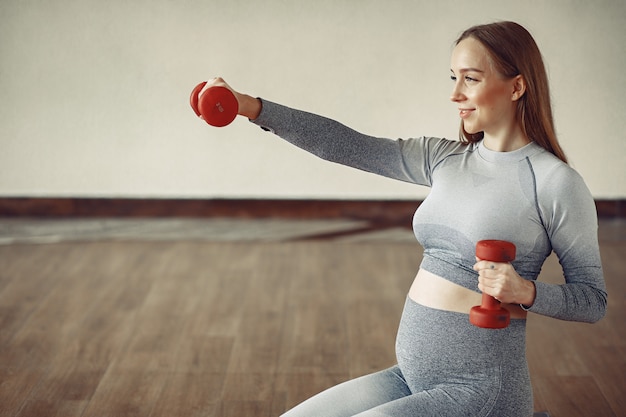
**Benefits of Exercise During Pregnancy**
**Exercise During Pregnancy: Why It’s Important**
Exercising when you’re pregnant might seem daunting, but it’s actually highly recommended by doctors and healthcare professionals. Working out can boost your mood, help you sleep better, and reduce the likelihood of aches and pains.
**Strengthening for Childbirth**
Prenatal exercise helps prepare you for the challenges of childbirth by strengthening your muscles and building endurance. There are even benefits after delivery. Research shows that staying active can help manage health issues and prevent diabetes and preeclampsia during pregnancy. For women with gestational diabetes, exercise can help avoid complications.
**Recommendations and Goals**
The American College of Obstetricians and Gynecologists advises healthy pregnant women to exercise for 20-30 minutes a day at a moderate intensity on most days of the week. The goal is to keep your heart strong, prepare your body for pregnancy and postpartum challenges, and stay fit.
**Exercise Classes**
Many gyms and community centers offer fitness classes designed for pregnant women, providing expert guidance to ensure you’re exercising safely.
**Cardio Exercises to Stay Fit**
*Walking:*
Walking is an excellent cardiovascular exercise for pregnant women. It keeps you fit without putting stress on your knees and ankles, and it doesn’t require any special equipment. Just wear comfortable clothes and shoes and walk away the stress. It’s safe throughout all nine months of pregnancy. However, be careful as your center of gravity shifts and your balance may be affected. Watch out for uneven surfaces and wear supportive shoes, especially if your feet swell in the later stages.
*Swimming:*
Swimming is one of the safest and best exercises for pregnant women. It works your large muscle groups, keeps your lungs healthy, and provides cardiovascular benefits. Additionally, it reduces swelling and creates a feeling of weightlessness, which can be a relief. Swimming is especially beneficial if you suffer from lower back pain. It poses little risk of injury and allows greater range of motion without stressing your joints. Water aerobics can also be a fun way to exercise.
When swimming, choose strokes that are easy on your body and avoid warm pools and steam rooms. Use the pool railing for stability and avoid diving or jumping into the pool as it can negatively impact your abdomen.
*Low Impact Aerobics:*
Low-impact aerobic exercises are gentle workouts that avoid high kicks, leaps, jumping, or fast running. These exercises are designed to keep one foot on the ground at all times to reduce joint stress and maintain balance. They protect your pelvic floor muscles and help prevent urinary incontinence. It’s best to join a class specifically for pregnant women so the instructor can tailor the workout to your needs.
*Dancing:*
Light dancing, like waltzing or swaying, is a wonderful way to relax and de-stress. The music can also be very soothing. Just avoid any moves that involve jumping or sharp jarring movements.
*Stationary Cycling:*
Using a stationary bike is a fantastic cardio exercise that gets your heart pumping without stressing your knees. Riding a stationary bike is safe for the baby and helps support your weight, reducing the risk of falling. Just ensure you don’t overdo it by cycling for too long at once.
**Flexibility Exercises During Pregnancy**
*Light Weight Training:*
Lifting very light weights can help prepare your muscles for pregnancy, strengthening the muscles around your joints and lowering the risk of injury. However, avoid lifting heavy weights as it can strain your muscles and put pressure on your abdomen. Never lie flat on your back while weight training and ensure you breathe correctly to avoid any adverse effects on you and the baby.
*Yoga:*
Prenatal yoga keeps your joints flexible, reduces stress, strengthens your muscles, and improves circulation. It helps you relax and manage blood pressure issues. Yoga is also great training for maintaining calm during labor. Avoid poses that challenge your balance as your pregnancy progresses and skip any positions that require lying on your back. Be mindful of overstretching as the hormone Relaxin increases joint mobility during pregnancy.
*Stretching:*
Stretching keeps your muscles flexible and prevents strain. It gives you a gentle workout but avoid over-stretching.
**Precautions to Take**
Here are some symptoms indicating you may be over-exercising and should see your doctor immediately:
– Abdominal, chest, or pelvic pain
– Lack of fetal movement
– Dizziness, nausea, or extreme fatigue
– Feeling overheated or cold and clammy
– Vaginal bleeding or rapid discharge
– Swelling in hands, ankles, or other parts
– Breathlessness or persistent contractions
– Difficulty walking
– Blurred vision
In conclusion, exercising during pregnancy helps you stay healthy and can ease both childbirth and the recovery process. Always ensure you have medical supervision to exercise safely.